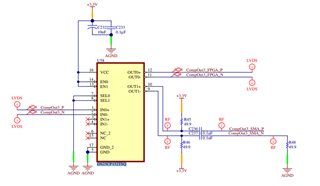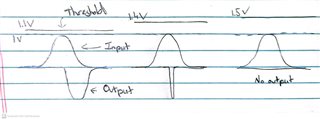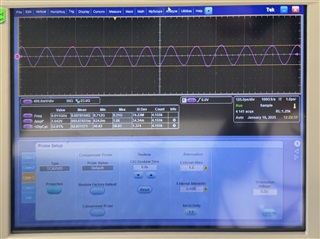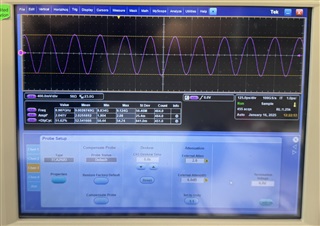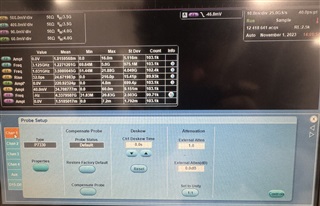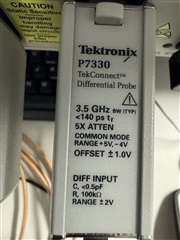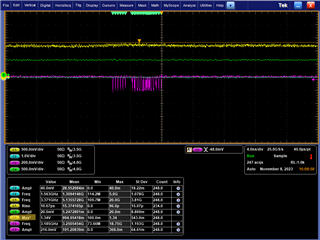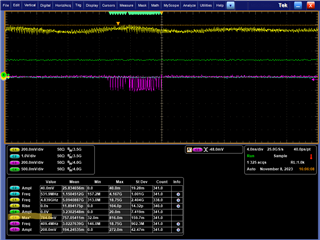Tool/software:
Hello.
We have a TLV3801 with a non-inverting input range of 0 - 4.1V as a requirement. We are attempting to voltage divide the range to 0 - 1.5V so that the input differential stays below 1.5V.
Fig1. Schematic of non-inverting input.
We replaced ATT8 in the figure with the voltage divider. We chose 49.9 Ohm and 86.6 Ohm resistors which should result in a ratio of ~.365. When testing the setup, we used a 800 Mhz sine wave with amplitude 1V. The output of the amplifier was 1.4V which was divided down to 640 mV. This is a ratio of ~.457. We tried a higher amplitude afterward and the circuit divided 2.4V to 1V, a ratio of ~.417. Could this non-linearity be caused by the comparator? Thanks for the help.



